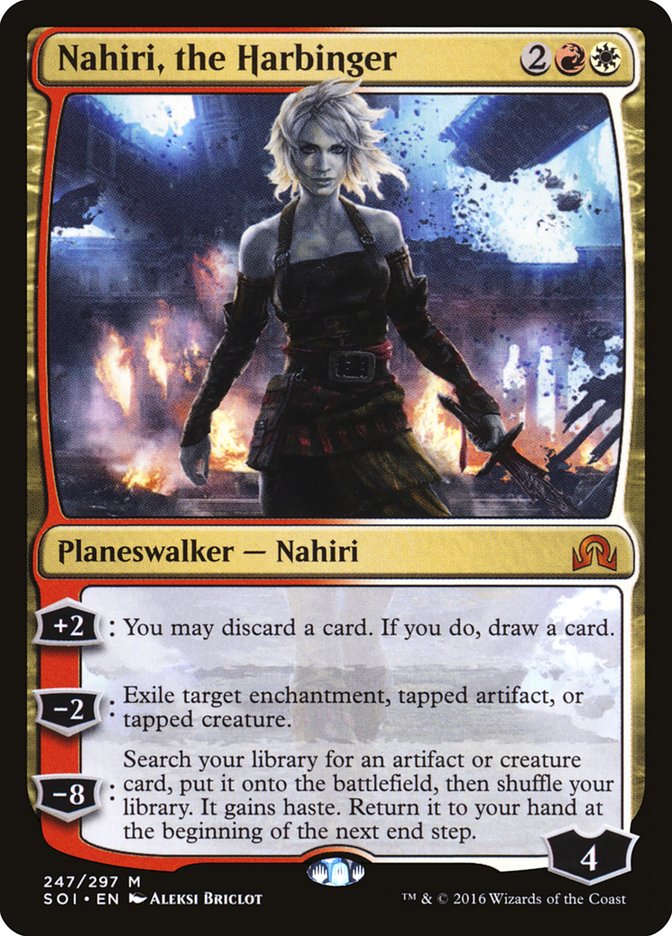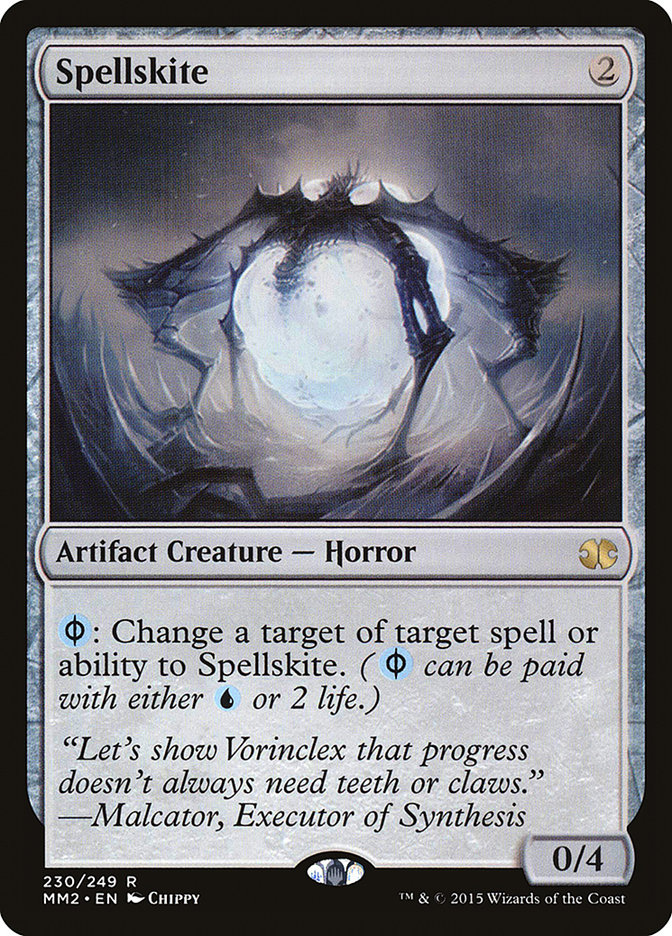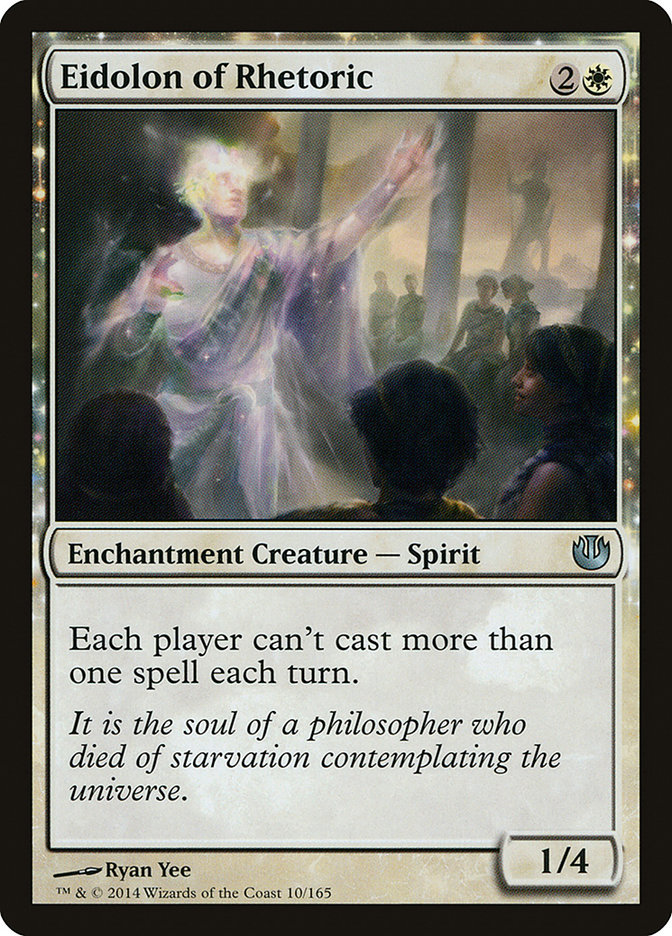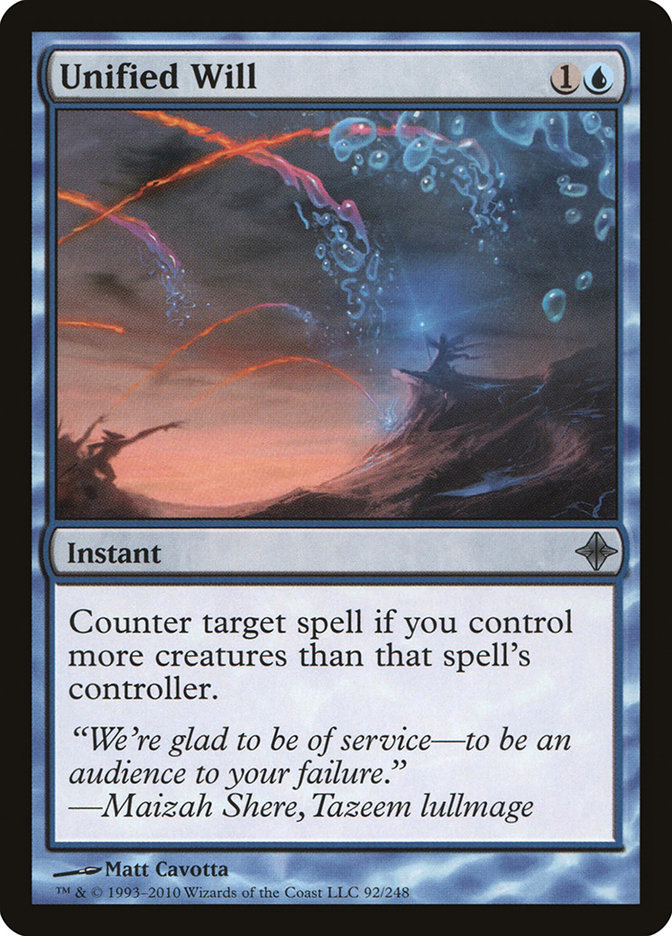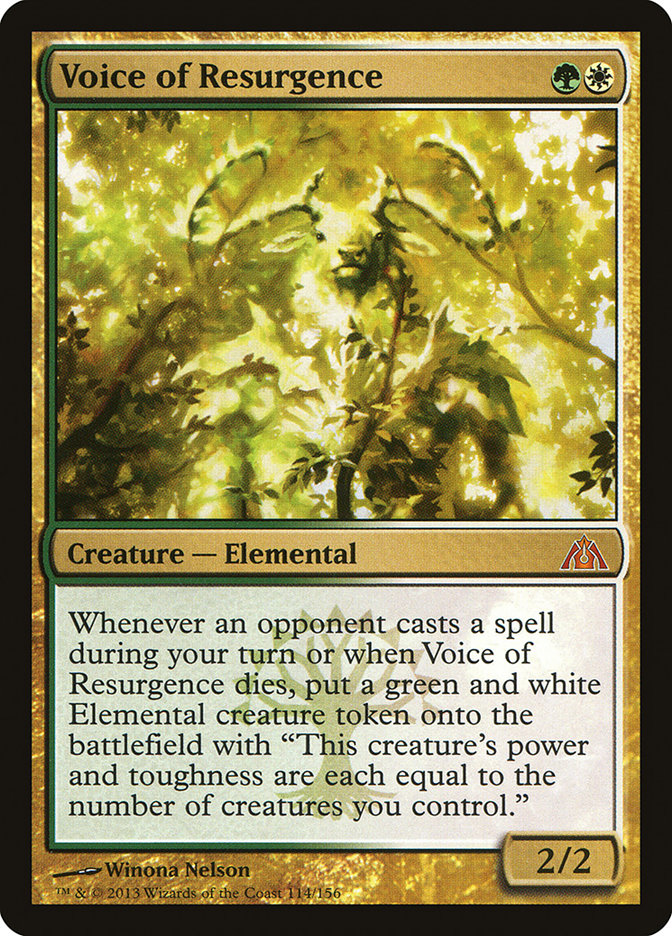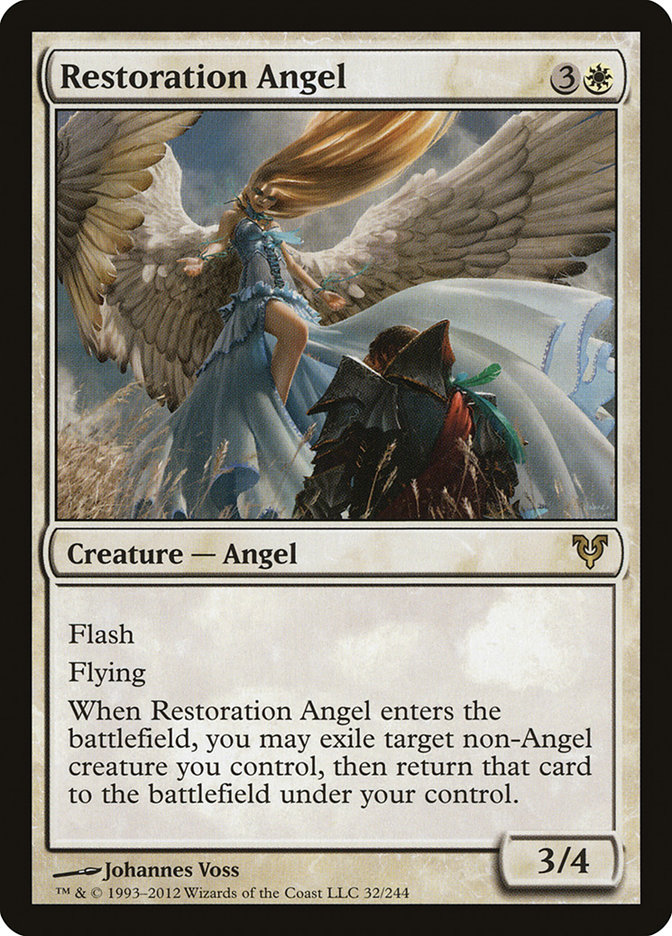Through thick and thin I have been playing various iterations of Kiki Chord to moderate success and I plan to continue doing so for the foreseeable future. I recently ventured out to the Team Constructed Open in Baltimore to play Modern. While the main event did not go as planned, I did manage to go 7-2 in the Modern Classic on Sunday to finish in tenth place out of roughly 260 players with the following decklist:
Creatures (26)
- 4 Birds of Paradise
- 1 Kiki-Jiki, Mirror Breaker
- 2 Eternal Witness
- 4 Wall of Roots
- 1 Glen Elendra Archmage
- 1 Emrakul, the Aeons Torn
- 1 Spellskite
- 1 Myr Superion
- 1 Scavenging Ooze
- 2 Restoration Angel
- 4 Voice of Resurgence
- 1 Courser of Kruphix
- 1 Pia and Kiran Nalaar
- 2 Spell Queller
Planeswalkers (4)
Lands (23)
Spells (8)

I have had folks asking for the specifics on how I came to the various conclusions for card choices in this configuration. So today I would like to share why I made the changes I did, as well as talk about some interesting decisions I had throughout the course of my eighteen matches in Baltimore.
Configuring Kiki Chord
Prior to the bannings of Gitaxian Probe and Golgari Grave-Troll, the best decks in Modern were easily Dredge and Infect. Because these decks were difficult to interact with profitably, it meant the format mostly sped up as a response. With these decks being returned to more fair levels, the format as a whole began to pivot. Decks like Grixis Control, Abzan, and Jund became more popular. This in turn led to big mana decks like Valakut builds and Tron to seeing an uptick in popularity as well.
As I dug through my boxes of Kiki tools, I came across an old favorite that was excellent at grinding out long games:
It had been awhile since I last registered this planeswalker. Previously, tapping out for a four-drop meant you died against Infect or Dredge had a window to put twenty power onto the battlefield. When people are casting Tarmogoyf on two or scrying with Serum Visions, she provides supplemental removal, card selection, and a game-ending threat that must be respected. Even better is the fact that the Dreadbores and additional copies of Maelstrom Pulse that had previously been popular had also fallen out of favor when Jeskai Control vanished from the format.
The big mana decks, especially those with Valakut, the Molten Pinnacle, have always been harder matchups for Kiki Chord. The best tool at our disposal for fighting these decks is another that I had not registered for some time: Glen Elendra Archmage. Because our deck is not particularly fast and big mana decks topdeck well, countermagic is the best way to combat them while we set up.
In addition to Glen Elendra Archmage, we have gained a shiny new toy to Chord for that can effectively counter spells:
While it is true that Spell Queller “dies to Lightning Bolt”, so do many of the important cards in our deck. By adding more must-answer threats to our deck, eventually we can run our opponent’s removal thin. We also have two great tools to make our Spell Quellers even better:
Spellskite protects our Spell Queller in a fairly obvious way, by eating a removal spell that would otherwise end our Queller’s life. Eidolon of Rhetoric is a far more interesting tool for making our Queller better, though. Because Queller lets a player “cast” the card it has removed, if your opponent has already cast a spell, they will be unable to recast a spell that was under your Queller. This also makes using Restoration Angel on your Spell Queller extremely powerful while Eidolon is on the battlefield.
The last blue card we are playing is in the sideboard:
The most common question I have gotten about this card is:
“Is Unified Will really better than Negate?”
The short answer is “Yes.”
The longer answer is that, in most matches where you want a counterspell, your opponent will be fairly creature-light. This means that if you do not have more creatures than your opponent, you likely have no creatures, which means you are losing the game regardless. I think this means the upside of having our countermagic stop things like Primeval Titan and Wurmcoil Engine is worthwhile.
Other notables in this decklist are the lack of Qasali Pridemage, the inclusion of Myr Superion, and the return of Courser of Kruphix. Pridemage felt like a safe cut from the maindeck, since we have Nahiri to clean up random enchantments Game 1.
Myr Superion was to account for the amount of Bant Eldrazi and Eldrazi Tron I was expecting at the event. Having a two-mana card we can Chord for that blocks Reality Smasher and Thought-Knot Seer profitably is huge.
Courser of Kruphix is a powerhouse against both midrange and aggressive decks that are attacking your life total. Against decks that are going long, Courser helps prevent us from flooding out and helps us make educated decisions when choosing to draw with Nahiri. Courser is also extremely powerful against Burn, since it gains small amount of life over time as opposed to trying to gain a bunch of life at once. This makes it near-impossible to deny completely with Skullcrack over a few turns.
Tournament Highlights
While there are always a number of interesting lines while playing Kiki Chord, there are a few moments that stand out in my mind from this weekend. I would like to talk about a few interesting decision points around some percentage plays that may or may not have been correct throughout the course of the eighteen matches I played.
To Quell or Not to Quell?
I am playing a post-sideboard game against R/G Scapeshift. I have seen Primeval Titan, Summoner’s Pact, and Scapeshift, but not Through the Breach so far. My opponent has an extremely fast start with Search for Tomorrow on turn 1 into double Sakura-Tribe Elder on turn 3.
On my turn 3 I am presented with the decision to either cast a Fulminator Mage out or hold up a Spell Queller. My battlefield currently is just three lands and a Wall of Roots and I am at seventeen points of life from having to fetch and shock.
My opponent can sacrifice both Sakura-Tribe Elders to go up to six lands. This means if they have a seventh land in hand, they can deal me eighteen points of damage with a Scapeshift. We can however respond to the Valakut triggers by activating Fulminator Mage to blow up a nonbasic Mountain.
Spell Queller can exile either a Scapeshift or a Summoner’s Pact, but it does not fare well if our opponent has a Lightning Bolt to go along with their threat.
Neither line is great if my opponent has a natural Titian, so that does not even factor into the decision process. What would you do?
I ended up jamming the Fulminator Mage and died to my opponent Pacting for a Titan. I think it was correct to play out the Fulminator Mage, since I needed to get pressure onto the table. I could see an argument for holding up the Queller and simply playing it out end-step if our opponent does not give us something to counter.
Keeping Calm Against Control
The control matchups are some of my favorites to play with Kiki Chord. The most important thing to keep in mind when playing against control is that you want to prioritize removing their threats. It does not matter how many cards they have in their hand if they do not have a clock on the table.
I was playing against Grixis Control post-sideboard and my opponent had mostly run me out of resources while having resolved two copies of Ancestral Vision. I had six lands on the battlefield and no cards in hand to their seven lands and seven cards in hand. The most important thing is that they did not have a threat to pressure my life total.
After trading a couple of turns back and forth, I picked up a copy of Voice of Resurgence and a Path to Exile. My opponent’s deck almost certainly contained a pile of Cryptic Commands, so there was no way I was playing a Voice out to simply get countered for no value. Finally, my opponent played out a ninth land and Serum Visions into a copy of Tasigur, the Golden Fang, leaving them with seven mana open.
When it came back to my turn, I drew a copy of Eidolon of Rhetoric. I led on Voice of Resurgence, because if my opponent has a Cryptic Command, they are almost certainly using it on this. My opponent Cryptic Commanded the Voice as expected, which then gave my Path to Exile the best window to resolve, which also happened. Figuring this was my best chance to stick the Eidolon as well, I jammed it onto the battlefield.
Eidolon really allows a game to pace out in a way we want it to. My opponent does not want to spend a removal spell on my Eidolon and I am in no hurry to make plays into ten open mana with someone who has seven cards in hand.
We played draw-go for a long while. I caught up in land drops and started to build up a hand full of action. Eventually my opponent realized he was going to deck out and made a move to kill my Eidolon. This allowed me to Chord for Restoration Angel to both counter his removal and add pressure to the table.
On my turn, he tried to tap my Restoration Angel and bounce my Eidolon with a Cryptic Command. I cast Chord for another Restoration Angel and blinked my Eidolon to counter his Command. On his next turn I was able to Spell Queller a Damnation without fear thanks to Eidolon and then on my following turn I was able to push through a lethal attack by Chording for a Spellskite.
Engineering the Perfect Explosives
I was in the middle of a long game against Bant Eldrazi. We were both empty-handed and the battlefield was mostly clear save for a Wall of Roots on my side of the table. My opponent found a copy of Grafdigger’s Cage and played it out. My topdeck the following turn was a copy of Engineered Explosives.
What do you do? Do you hold the Explosives in case your opponent draws a threat or do you play out the Explosives on one in case your opponent draws a Thought-Knot Seer? My opponent had only played out one Thought-Knot Seer so far, but I had played out three Chord of Calling and zero Nahiris.
I ended up playing out Explosives for one. My line of thought is that Chord and Nahiri were my two best topdecks and I wanted them active should I draw them. My opponent drew an Eldrazi Displacer the following turn, which ended up taking over the game before I could find more action.
Pacing the Game with Explosives
I was playing against the new Death’s Shadow deck with the Traverse the Ulvenwald package. It is post-sideboard and my opponent played a fetchland and passed to me. My hand was fairly reasonable. It had a copy of Engineered Explosives along with a copy of Nahiri and a Path to Exile.
When you are playing Engineered Explosives against decks like Death’s Shadow, there are two different methodologies you could apply. The first is holding the Explosives in your hand until your opponent has played out their threats onto the battlefield. This method is more likely to generate “value,” as many times your opponent will play out multiple cards of the same cost and you can clean them all up. The downside to doing this is it requires a larger mana investment down the line and it leaves your removal vulnerable to something like Inquisition of Kozilek.
The second is being proactive with your Explosives to help control the pacing of the game. By playing your card out proactively, you give up some information, but you also force your opponent to slow themselves to match your desired pace. As long as your Explosives stays on the battlefield, your opponent is fairly unlikely to play out a second card Explosives can kill, and as long as you leave two mana open, your opponent will be unable to play something like Temur Battle Rage without getting blown out.
On my first turn of the game, I opted to go with the second school of thought and played out my Explosives for one mana onto an empty battlefield. As the game progressed, I ended up Pathing my opponent’s first Death’s Shadow when they were tapped out rather than use the on-battlefield Explosives. This is because I knew my Explosives would likely kill my opponent’s threat at any point in the game, while my Path could be countered on a later turn when my opponent had resources available to them.
Wrapping Up
After reviewing the GP, Open, and Classic results, there are two changes I would like to make to the configuration I played in Baltimore. The first is playing an additional copy of Engineered Explosives in the sideboard. This card is fantastic against not only Death’s Shadow and Lantern Control but also Merfolk and Affinity, which also placed well. The other change is fitting either a Qasali Pridemage or Deceiver Exarch into the maindeck. Being cold to Ensnaring Bridge Game 1 against Lantern feels really bad. Pridemage can blow up Bridge directly and Exarch can tap the Bridge so Nahiri can exile it.
If you are a Chord player, what are some neat tools you like to utilize for combating the changes we have been seeing in the Modern format? Do you agree with my shift to blue cards, or do you think there is a better direction to be taking the archetype?


